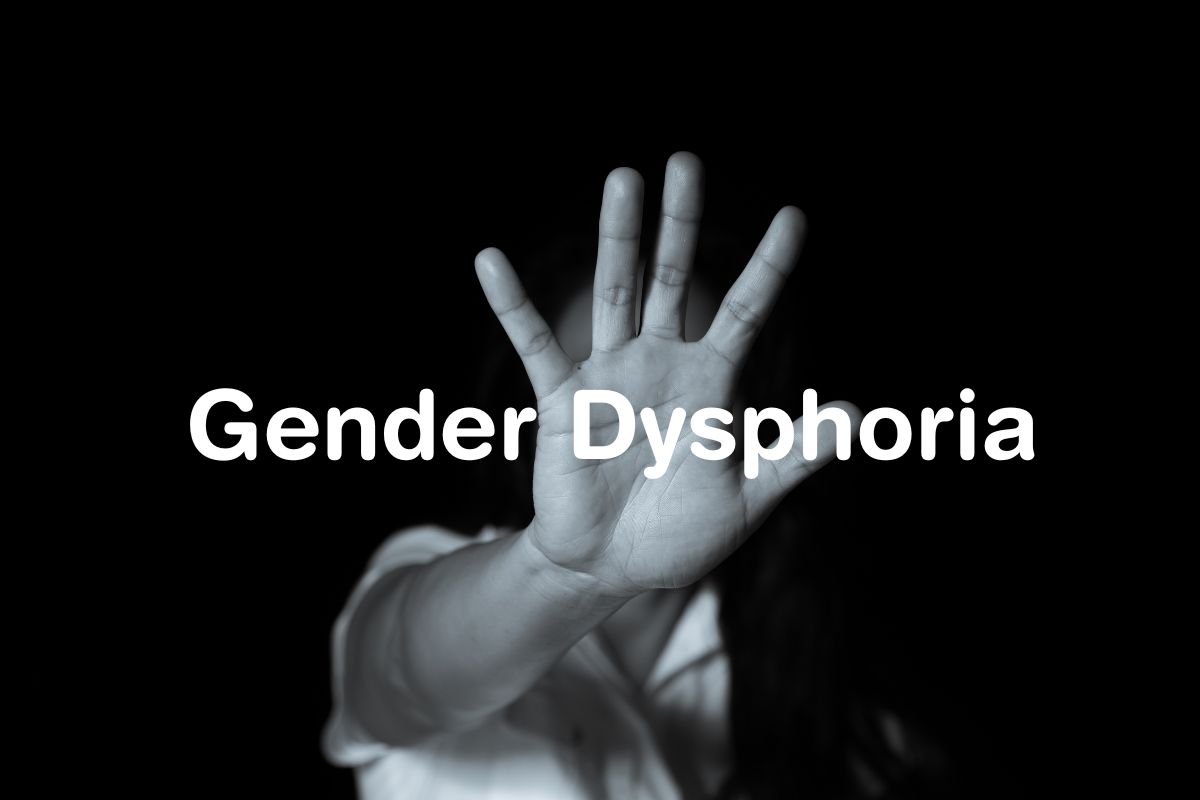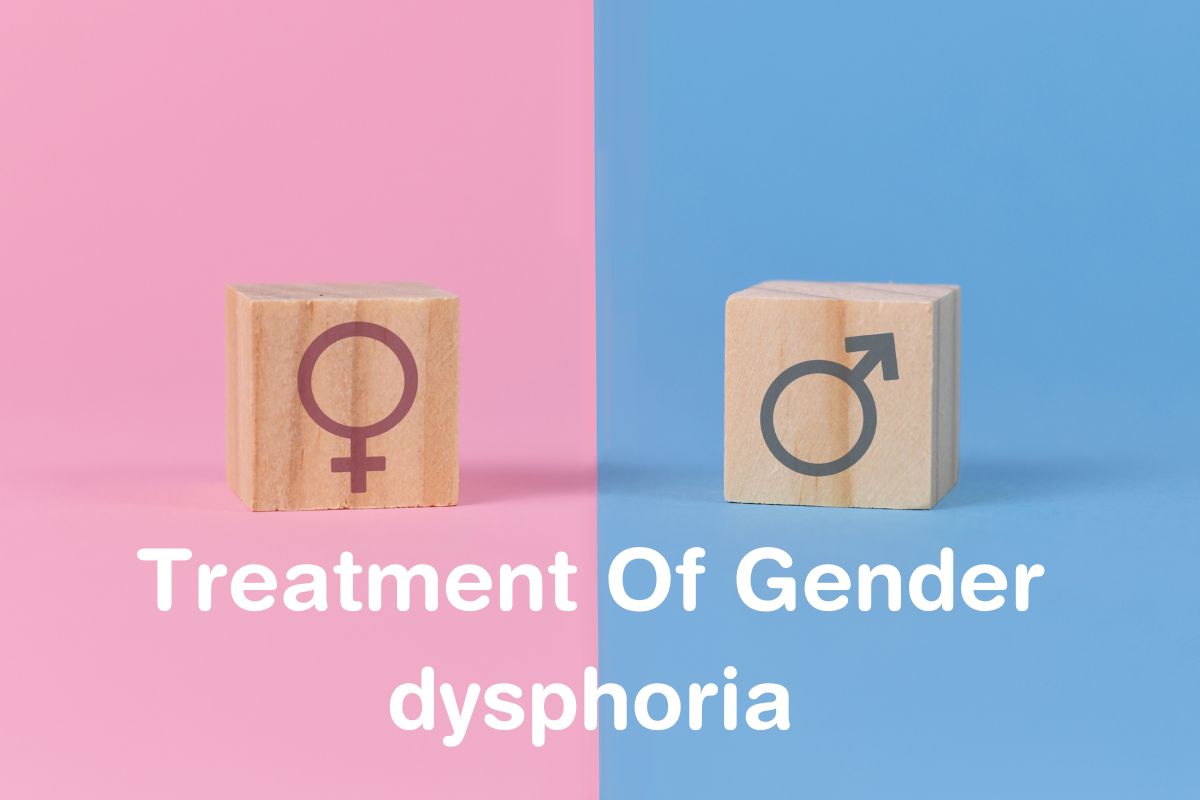Gender dysphoria happens when a person’s gender identity doesn’t match the sex they were assigned at birth, leading to distress and mental health struggles. Treatments like hormone therapy, gender-affirming surgery, and therapy can help individuals feel more at home in their bodies.
Imagine a night out with friends—your biggest worry is who’s buying the next round. But for someone with gender dysphoria, even speaking up or using the restroom can feel overwhelming. Will their voice give them away? Will they face judgment?
Studies show that 0.6% of adults and 1.4% of teens worldwide experience gender dysphoria. While stigma remains, awareness and support are growing in 2025, making it easier for individuals to access care and live authentically.
What is Gender Dysphoria?
Gender dysphoria is when someone feels uncomfortable because their gender identity doesn’t match the sex they were given at birth. It used to be called gender identity disorder, but now people understand it’s not just about identity—it’s about the distress it causes.
Lately, more people are talking openly about gender, and society is becoming more accepting. But even with this progress, many still struggle with fear of judgment and pressure to fit in, which can make everyday life really tough.

Symptoms of Gender Dysphoria
Gender dysphoria can affect anyone, regardless of age, and has a major impact on mental health. Some common symptoms include:
- A strong conflict between one’s gender identity and the sex assigned at birth.
- A deep desire to change or remove traits associated with birth sex.
- A strong need to have the physical traits of their identified gender.
- A desire to be treated as their true gender.
- A belief that their emotions and behaviours align with their identified gender.
This distress can affect many parts of life. Some people may avoid school or work due to pressure to dress a certain way or fear of bullying. Others may struggle with anxiety, depression, self-harm, or even substance abuse. In severe cases, the emotional burden can lead to suicidal thoughts.
Even though awareness is growing, there is still a need for more research on how gender dysphoria connects to mental health challenges like depression and anxiety. A better understanding can lead to stronger support systems and improved treatment options.
Causes of Gender Dysphoria
Gender dysphoria has no single cause—it’s influenced by a mix of biological, psychological, and social factors. While research is still ongoing, it’s clear that a supportive and understanding environment is crucial for those experiencing it.
Possible Causes:
Biological Factors:
- Differences in brain structure and function
- Hormonal imbalances before birth
- Genetic influences
Psychological Factors:
- Childhood experiences or trauma
- Mental health struggles like depression and anxiety
- Bullying or rejection based on gender expression
Social and Cultural Factors:
- Stigma and discrimination against transgender individuals
- Limited access to gender-affirming healthcare
- Lack of acceptance and understanding of gender diversity
How is Gender Dysphoria Treated?
If someone feels uncomfortable in their own body because their gender doesn’t match what they were assigned at birth, there are ways to help. The goal of treatment is to reduce stress and help people feel more like themselves.
Common Ways to Manage Gender Dysphoria:
- Hormone Therapy – Taking hormones to help change body features, like voice, muscle tone, or hair growth, to match gender identity.
- Gender-Affirming Surgery – Some people choose surgeries to change certain body parts so they feel more comfortable in their skin.
- Therapy & Support – Talking to a therapist can help with emotions, confidence, and handling challenges like bullying or anxiety.
Gender Dysphoria in Children
Some kids feel like the gender they were assigned at birth doesn’t match who they really are. This can make them feel confused, upset, or even anxious. They might prefer clothes, toys, or activities that don’t match what’s expected of them, or they may insist they are a different gender altogether.
Not all kids with gender dysphoria will identify as transgender later in life, but for those who do, early support is crucial. Feeling accepted and understood can help prevent stress, anxiety, and other mental health struggles.
Ways to Support Kids with Gender Dysphoria:
- Let them express themselves – Allow kids to dress, play, and act in ways that feel natural to them.
- Provide gender-affirming care – If needed, a doctor can guide medical options like puberty blockers.
- Encourage therapy – A supportive therapist can help kids process their emotions and build confidence.
- Create a safe environment – Family, friends, and schools play a huge role in making kids feel accepted.
DSM-5 Criteria for Gender Dysphoria
The DSM-5 (Diagnostic and Statistical Manual of Mental Disorders, Fifth Edition) outlines specific signs to diagnose gender dysphoria. These include:
- A strong desire to be a different gender.
- Discomfort with one’s assigned gender.
- Distress or struggles in daily life due to these feelings.
Gender Dysphoria in Adults
Gender dysphoria isn’t just something kids or teens experience—it can affect adults too. Some people don’t fully realize their true gender identity until later in life. It’s important to create a safe space where adults can explore their identity and get the support they need. Therapy, support groups, and gender clinics can be helpful for those navigating this journey.
Gender Dysphoria and Mental Health
Struggling with gender identity can take a toll on mental health. Many people with gender dysphoria experience anxiety, depression, or stress due to feeling misunderstood or unaccepted. That’s why emotional support is just as important as any medical treatment. Therapy, counseling, and support networks can make a big difference.
How Support and Counseling Help
Having people to talk to can make the journey easier. Here’s how:
- Support Groups – Talking to others who understand can be comforting and empowering.
- One-on-One Counseling – A therapist who knows about gender dysphoria can help with emotions, self-acceptance, and coping skills.
- Family Support – When families understand and accept, it can make a huge difference. Family therapy can help improve communication and build stronger relationships.
Hormone Therapy for Gender Dysphoria
Some people with gender dysphoria choose hormone therapy to help their body match their gender identity. This involves taking testosterone or estrogen under a doctor’s supervision. Hormone therapy can lead to physical changes that help people feel more comfortable in their own skin.
Medications for Gender Dysphoria
Besides hormones, some people may take medications to help with anxiety, depression, or other mental health struggles related to gender dysphoria. A doctor can help decide what’s best based on individual needs.
Gender Dysphoria After Puberty
For people who realize their gender identity after puberty, the transition process can be more complex. Some may feel dysphoria more intensely due to body changes that don’t match how they feel inside. Seeking professional help can provide guidance on how to navigate these feelings and options for transition.
Gender Dysphoria and Disability
People with disabilities can also experience gender dysphoria, and they may face unique challenges. It’s important to ensure they have accessible healthcare, proper support, and understanding professionals who respect their needs and identity.
Gender Dysphoria in Adults: Finding Understanding and Acceptance
Adults with gender dysphoria often face unique challenges as they explore and embrace their true gender identity. Having support from family, friends, and society is key to their mental and emotional well-being. Creating an environment that values respect, inclusivity, and acceptance can make a huge difference in their journey.
Conclusion
Gender dysphoria is a deeply personal experience. Learning about its challenges, treatment options, and ways to support those affected helps create a more understanding and accepting society. By spreading awareness and standing up for inclusivity, we can help people with gender dysphoria feel safe, valued, and happy.
FAQs
1. Is gender dysphoria a mental illness?
No, gender dysphoria itself is not a mental illness. It’s a condition where someone’s gender identity doesn’t match the sex they were assigned at birth. However, struggling with dysphoria can lead to stress, anxiety, or depression, which is why support and acceptance are so important.
2. Can gender dysphoria be treated?
There’s no “cure” for gender dysphoria, but there are ways to help people feel more comfortable in their own bodies. Therapy, hormone treatment, and gender-affirming surgeries are some options that can reduce distress and improve well-being.
3. How can I support someone with gender dysphoria?
- Listen without judgment.
- Respect their pronouns and name.
- Educate yourself on gender identity and dysphoria.
- Encourage them to seek support (therapy, groups, or trusted friends).
4. How do I create a safe and inclusive environment?
- Use correct pronouns and gender-neutral language when appropriate.
- Respect people’s identity and never “out” someone without permission.
- Support gender-neutral facilities and policies.
- Stand up against discrimination and misinformation.
5. Where can I find more information and support?
There are many resources to help you learn more or find support:
- LGBTQ+ organizations like PFLAG, The Trevor Project, or local support groups.
- Online communities where people share experiences and advice.
- Healthcare professionals who specialize in gender identity.

